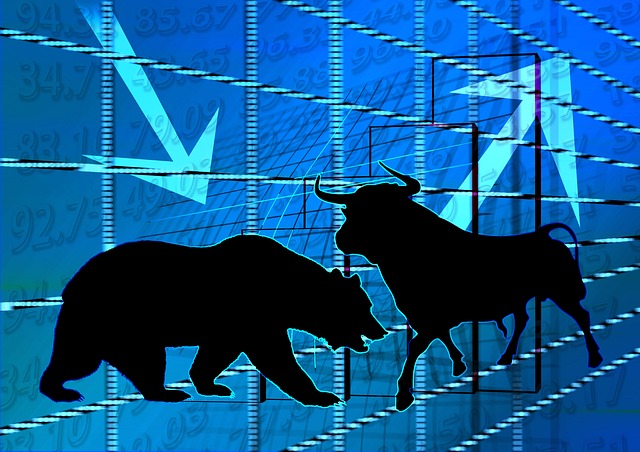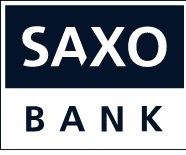
Saxo Q2 Outlook: The End Game has Arrived
Saxo Bank’s Outlook for Q2 argues that we are witnessing nothing less than the arrival of the end game for the paradigm that has shaped markets since the advent of the Greenspan Fed put in the wake of the LTCM crisis of 1998. The twin shocks of the pandemic and Russia’s invasion of Ukraine have shifted priorities on all policy fronts, including fiscal, monetary and geopolitical. In the US, the imperative for the Fed to grapple with spiraling inflation risks has disrupted the traditional rinse and repeat of bailing out financial markets and the economy at the first ripple of trouble. Shortly put, the strike price of the “Powell put” is far lower than it was a year ago – the Fed must get ahead of the curve. In Europe, the Russian invasion of Ukraine has seen Germany tossing decades of fiscal and defence policy out the window, ushering in a new era of investment that should drive a strong rise in productivity. EU existential risks have disappeared as defence priorities soar above all other considerations.
Helmets on, as 2022 will prove a wild ride for global markets.
“This outlook addresses the tectonic shift already underway in global macro and politics. Gone are the days of ever-falling real interest rates and ever more financialisation, to be replaced by a new rise in productivity as we move the economic agenda to a better and more rational place, despite the gruesome humanitarian news we get day by day from the war in Ukraine,” says Steen Jakobsen, Chief Economist and CIO at Saxo Bank, in the introduction to the Quarterly Outlook and adds:
“The starting point for this paradigm shift is that the fiscal restraints that have been a central premise in global economic policies since the 1990s are now gone! The shift was already enormous during the pandemic, but was most stark in the case of the German response to the war in Ukraine.”

“Now, the supply-side shocks of Covid and the war in Ukraine have accelerated our path toward more productivity. Policy simply must take us toward more price discovery and positive real yields as market and government actors fight for investment in a world, we now understand is highly constrained by absolute energy, environmental and capital limits.
“I am probably too early in prognosticating this necessary shift and I fear a runaway inflation end game before we get to the point described above; central banks are not only late to the party but may have entirely missed the opportunity to bring down inflation in the medium term. Into this reality, there is now a dire need for central banks to stop chasing inflation from behind and to get ahead of the curve. “
“In conclusion, we have three cycles simultaneously impacting the market:
The ongoing supply crunch from Covid and the war in Ukraine, but also from the world’s physical limits
The repricing of assets against a backdrop of rising inflation
The new Fed tightening cycle lifting off in March is set to continue
“These will eventually lead to two key outcomes. Firstly, on a strategic macro level, an increased spending on energy and defence priorities, but also supply chain diversification to remove single points of failure for strategic industries. Secondly, negative real rates turning more positive as an indication that the global economy is set for a major productivity boost, away from short-term financial gains and rent seeking and toward tangible assets, infrastructure and a reaffirmation of the social contract,” says Steen Jakobsen.
Equities: Productivity, innovation and pricing power have never been more important
“Before Russia’s invasion of Ukraine equities were already under pressure from rising commodity prices and a worsening interest rate outlook. The war and subsequent severe sanctions against Russia have catapulted the world into an unpredictable and maximum uncertainty environment. When the future becomes more uncertain, the precautionary principle dictates that the equity risk premium should go up, with equity valuations going down as a consequence.” says Peter Garnry, Head of Equity Strategy at Saxo Bank.
“Equity valuations are primarily driven by four factors: revenue growth, EBITA margin, incremental investment needs, and the discount rate on future cash flows. While the ongoing inflationary pressures might push up nominal revenue growth, the three other factors are all moving in the wrong direction.
“With a large-scale war back in Europe and commodity markets in upheaval, this has aggravated inflationary pressures and equities have entered an environment not seen since the 1970s. High inflation is essentially a tax on capital and raises the bar for return on capital, and thus inflation will filter out weaker and non-productive companies in a ruthless fashion. The days of low interest rates and excess capital keeping zombie companies alive longer than necessary are over.
“Reading Warren Buffett’s shareholder letters from the 1970s the key to survival is productivity, innovation or pricing power. The latter is often a function of productivity and innovation, and coincides with high market share—or just size in general—providing economics of scale. Over the past year, we have frequently mentioned mega caps as a theme during inflation. The largest companies in the world are the last to get hit from tighter financial conditions, and they also have the pricing power to pass on inflation to their customers for a longer time than smaller companies,” says Peter Garnry, Head of Equity Strategy at Saxo Bank.
Commodities: War and sanctions turbocharging already tight commodity markets
“The prospect for a long-lasting cycle of rising commodity prices that we first wrote about at the start of 2021 continues to unfold. During the past quarter, the war in Ukraine and sanctions against Russia helped turbocharge a sector that was already witnessing a tightening supply outlook. Before government handouts and central banks dumping rates to zero helped drive a post-pandemic overstimulation of the global economy, years of ample supply with steady prices had reduced investments towards new production, thereby leaving producers ill-prepared for the demand surge that followed,” says Ole S. Hansen, Head of Commodity Strategy at Saxo Bank.
“With normal commodity supply channels from Russia broken, an end to the war in Ukraine is unlikely to trigger a swift return to normality. The breakdown in relations and trust between Putin’s Russia and the West is likely to take a long time to mend.
“Multiple uncertainties will trigger another wide trading range during the second quarter—potentially between $90 and $120 per barrel. Ultimately the market should stabilise with an upside price risk from reduced spare capacity among key producers and continued supply disruptions related to Russia being partly offset by slowing demand as the global economy becomes increasingly challenged by inflation and rising interest rates. Add to this a temporary Covid-related drop in demand from China and the outlook for a revisit to the March high looks unlikely,” says Ole S. Hansen and he continues:
“Key events that could trigger additional uncertainty remain the prospect for an Iran nuclear deal, Venezuela being allowed to increase production and, not least, an increase US shale oil production, should producers manage to overcome current challenges related to lack of labour, fracking teams, rigs and sand.“
Information Source: Read More
Oil and gas, press , | Energy, Climate, Renewable, Wind, Biomass, Sustainability, Oil Price, LPG, Solar, Electric,


